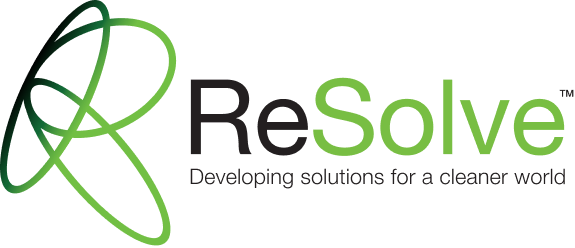The per-and poly-fluoroalkyl substances (PFAS) are a group of over 4,700 industrial chemicals used to make everyday products that resist heat, oil, stains, grease, and water—also known as a “forever chemical,” PFAS is a carbon chain-based compound with a high affinity for water.
There is growing concern that PFAS can be released into the environment at every stage of a product's lifecycle and that they are highly hazardous to human health and our environment. While we can't see the PFAS molecules spreading, they are there.
Standard water treatment works can't remove them, so the PFAS flows out with treated water and spreads onto fields. They also come off during product use, transferring from packaging or cookware to the food we eat to our bodies, and are subsequently lost into wastewater and discharged into streams. Flowing into our rivers and seas, once PFAS gets into the tiniest organisms, its position in the food chain can grows. Once in our bodies, some PFAS can harm our immune systems and kidney and liver function, and some even cause cancers.
PFAS can survive in our bodies and the environment for hundreds of years - in the air we breathe, the soil our food is grown in, and the water we drink. It's a global issue and, therefore, a global challenge. Clean Earth has always been at the forefront of unique solutions for hazardous challenges and is developing innovative ways to help solve PFAS contamination and restore a healthy environment.
PFAS is on every continent, including the North and South Poles. It can be found in dust, airborne particles, soil, in different forms of water, including waterways, snow and rain, and in everyday items such as non-stick cookware, water-resistant fabrics and personal care products. Levels of PFAS have been found in marine life, sea birds and crops.
Yes, we manage and treat PFAS today, in contaminated water.
PFAS requirements are growing. The regulation of PFAS chemistry has focused almost exclusively on two synthetic chemicals of concern: Perfluoro-octanoic Acid (PFOA) and Perfluoro-octane-sulphonate (PFOS).
Awareness of the widespread contamination of the environment with these compounds has grown over the last decades, alongside a growing understanding of their toxicity. This has led to restrictions in manufacturing and market for these chemicals through voluntary phase-outs and national and international regulations.
According to the EPA, "In March 2023, the agency took a key step to protect public health by proposing to establish legally enforceable levels for six PFAS known to occur in drinking water, fulfilling a foundational commitment in the Agency's PFAS Strategic Roadmap. Through this proposed rule, EPA is leveraging the most recent science and building on existing state efforts to limit PFAS to provide a nationwide, health-protective level for these specific PFAS in drinking water." Our Current Understanding of the Human Health and Environmental Risks of PFAS | US EPA
According to the federal agency, it has learned that PFAS are widely used, long-lasting chemicals, components of which break down very slowly over time. Because of their widespread use and their persistence in the environment, many PFAS are found in the blood of people and animals all over the world and are present at low levels in a variety of food products and in the environment. PFAS are found in water, air, fish, and soil at locations across the nation and the globe. Scientific studies have shown that exposure to some PFAS in the environment may be linked to harmful health effects in humans and animals.
There are thousands of PFAS chemicals, and they are found in many different consumer, commercial, and industrial products. This makes it challenging to study and assess the potential human health and environmental risks. Our Current Understanding of the Human Health and Environmental Risks of PFAS | US EPA
On January 24, 2022, as part of their comprehensive Strategic Roadmap to confront the human health and environmental risks of PFAS, the EPA announced the automatic addition of four per- and poly-fluoroalkyl substances (PFAS) to the Toxic Release Inventory (TRI) list.
TRI data are reported to the EPA annually by facilities in specific industry sectors that manufacture, process, or otherwise use Tri-listed chemicals above particular quantities. The data includes amounts of such chemicals released into the environment or otherwise managed as waste.
There is currently no federally enforceable regulation when it comes to PFAS. However, specific states have adapted their own rules regarding drinking water.


